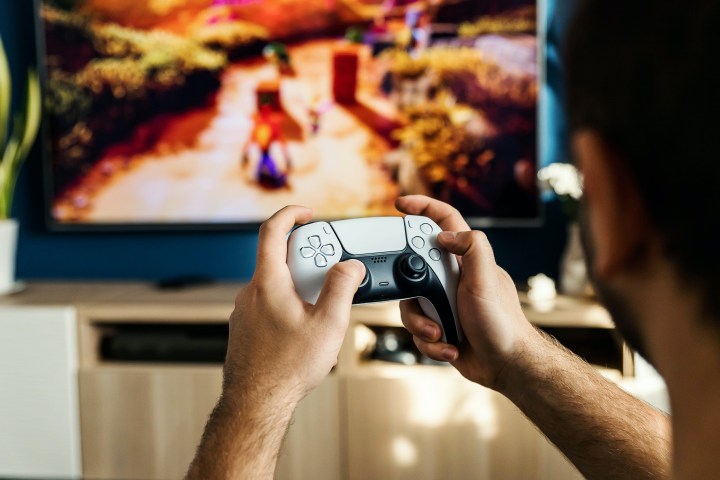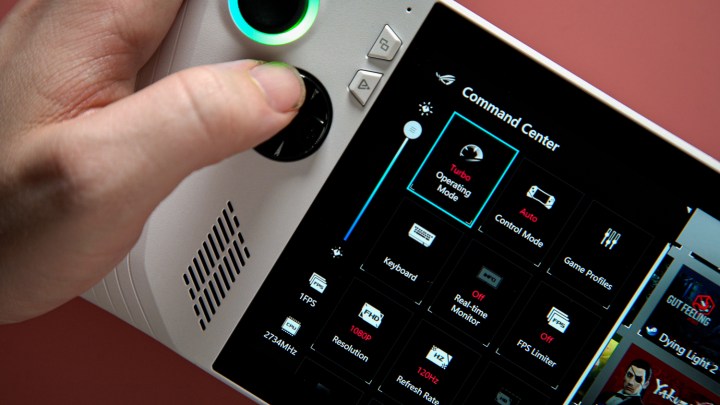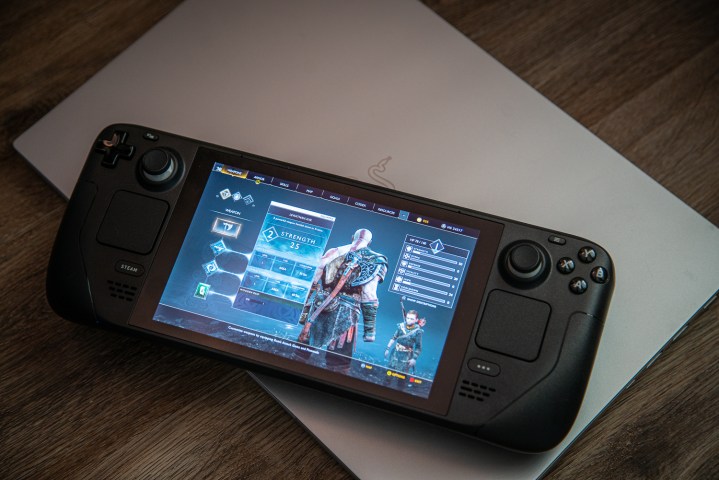For a long time, video game hardware cycles were pretty straightforward. You’d only have to worry about three major video game systems and a handheld or two at any given time. It was possible to own pretty much every major piece of gaming tech released in a generation without going into debt.
The gaming hardware landscape has significantly changed in the 2020s, though. You’ve got consoles and their frequent upgrades, VR headsets, handheld PCs, cloud-streaming devices, quirky indie hardware, and much more. It can be extremely difficult to keep track of it all and know what’s worth buying. Luckily, you don’t have to; we’re here to help.
Digital Trends has been a source of video game hardware reviews since 2005, dating back to the Game Boy Micro. We’ve always kept up with the latest generations of consoles and helped our readers make informed purchasing decisions. Now with even more devices than ever to choose from, we’ve modernized alongside the industry to cover everything from the PS5 to the Playdate. Here’s a peek into our video game hardware testing process, which will give you a better sense of how we test a wide array of devices.
Design

Any hardware review always starts with that unboxing moment. While the visual design of a console is always going to be a matter of taste, we spend some time checking the build quality of a device. Does it feel like a sturdy piece of tech that we won’t have to replace? With something like a base model Nintendo Switch, we could tell right away that its flimsy kickstand could present some problems down the road. On the flip side, we could tell that the Xbox Series X feels like a premium console built to stand the test of time. While there are always long-term factors that are hard to account for, we make the best judgment we can early on based on the build quality and how sturdy it feels.
Device size and comfort have become an increasingly important part of our testing process lately too, especially as we’ve begun to see a resurgence of portable devices in the Steam Deck age. With home consoles, we’re always looking to get a sense of just how hard they’ll be to slot into an entertainment center. But for something like an Asus ROG Ally, that testing is even more critical. How heavy is it in our hands? Are the controls naturally laid out? Does it feel like it’ll put a strain on players after long play sessions?
Questions like that are also critical to VR headsets, as comfort is a primary concern there. When testing any device, we make sure to put it through as many use cases as possible and spend long sessions with them to see where we start to feel discomfort.
Controls

Controller testing is especially important to our process; after all, you’re potentially going to spend close to a decade with something like the PS5’s DualSense. Our first test is always for comfort, testing how well any controller (external or built-in) sits in our hands. We’re always looking at button layout and making sure everything feels like a natural reach that doesn’t require much strain.
Build quality is just as important here too. We want a controller that feels premium, not something flimsy that we know we’ll replace immediately. That’s crucial for devices like the Steam Deck since it can be incredibly difficult to replace broken parts. We look for high-quality buttons that feel properly reactive out of the box, as well as joysticks that feel like they’ll hold up to wear and tear well – something that’s especially top of mind in an era plagued by stick drift.
From there, we dive into any special features a controller has, whether that be HD rumble or something more complex. With the DualSense, for instance, we spent a fair amount of time getting a sense of how its adaptive triggers worked and judging whether or not the extra effort needed to use them is worth it for the in-game experience.
Setup and features

Once it’s time to boot up a console, there’s a lot to dig into. Naturally, that starts with the setup process, as we test how easy it is to get it running. That’s important for portable PCs especially, as we want to make sure anyone can boot up an Asus ROG Ally and start playing their games with ease. Can you get Xbox Game Pass running on a Razer Edge without having to hunt down a complicated YouTube tutorial? We try to answer questions like that early when thinking about modern devices. This is where we also test how easy it is to set up external devices, like Bluetooth headsets, to a console.
There’s a lot to examine once it’s powered on. We’re looking for a clean interface that’s easy to navigate, and we dive into settings menus to see how customizable it is, see what kind of apps we can get running on it smoothly, and much more. While we do a lot of deep diving into every feature we can find and messing around with settings, a big part of our testing comes down to the more casual experience we have when playing. We try to turn our reviewer hats off for a little while and just use a console the way we’d normally use it. How easy is it to interact with a device on a daily basis? Can we turn a PS5 on, buy a game off the store, navigate to the Netflix app, or check our trophies without thinking about it too much? We always strive to deliver deep dives on tech, but we feel it’s just as important to capture that base-level user experience that we feel most users will have with a console.
These days, we tend to do a lot of device-specific feature testing too. During our PS5 review process, we made sure to test the system’s unique card feature and easy hint systems as much as we could with a limited software library. Extras like that are often big factors that set consoles apart, so we always want to interrogate whether those bells and whistles are worth it. We’re especially always looking to see whether or not it feels like the console manufacturer is actually committed to its hardware gimmicks or if they’re going to go to waste. Remember the Joy-Cons’ IR sensors?
Also top of mind is storage space. We usually know a system’s storage ahead of time, but we always want to get a sense of how fast that space winds down once you start downloading games. It was a primary point of criticism in our Xbox Series S review, as we noted that its storage was so paltry that you’d need to invest in a pricey external solution that would wind up making the console an investment on par with the Series X anyway.
Performance and power

The main course of any console review is performance and power, but that’s actually the trickiest part of our process at times. When reviewing something like a PS5, we only have access to so many games right out the gate — and usually, companies try to put their best foot forward at launch. We test things like frame rate, resolution, and graphical fidelity, but you often don’t get the full story of a console’s performance right out of the gate. Just look at the current state of “next-gen consoles” that struggle to hit 60 frames per second on major releases like Redfall.
So when we talk about performance, we’re more reviewing a system’s potential. Based on our tests, we try to find what we believe a console’s ceiling will be. If something like a PS5 blows us away from day one, we know it’s only going to get more impressive as time goes by. The Nintendo Switch is on the flip side of that dynamic. Games like The Legend of Zelda: Breath of the Wild were impressive right out of the gate, but it was always clear that the system wasn’t as capable as even a PS4 in 2017. We try to factor in the long-term outlook as much as possible when we review hardware, taking into account how fluid the situation can be.
Performance becomes a much more important and heavily tested factor in devices like the Steam Deck. In those cases, we know that we need to be incredibly thorough with our tests and determine where the tech peak from the start. What games does a Steam Deck struggle to run? What does that mean for its long-term potential as more current-gen-only games launch? How customizable are those devices, allowing us to squeeze more power out? That’s an entirely different set of questions than the ones we face in traditional console reviews, making them more like PC tests.
In the portable renaissance, battery life is of the utmost importance too. Being able to run Elden Ring on a Steam Deck is great, but is it that exciting when your battery dies in 45 minutes? It’s a key test in cloud gaming devices too, as handhelds like Logitech’s Cloud G excel at what they do thanks to lengthy charges. We try to put any portable we test to its limits, trying to find what we can get out of it performance-wise while still making it a practical handheld.
Software

Of course, you can’t test a video game console without actual video games. With any device, we try to test a large spread of titles, from the most technically impressive thing it can run down to smaller indies. We always want to make sure that there’s a good library of games that take advantage of a new console out the gate. The Nintendo Switch, for instance, was an easy recommendation on day one thanks to Breath of the Wild, while we urged a bit more patience for the Xbox Series X.
This is another area, however, where we’re more reviewing a device’s potential than anything. We only have a very limited number of games to test at a console’s launch and we only know a small percentage of what’s on the horizon. We try to set your expectations early with a hardware review, taking into account what games are coming and how committed the platform is to new releases. With the PlayStation VR2, for instance, we noted that the headset had a lacking launch lineup with very little in the pipeline. That gave us a sense that Sony isn’t planning to load the platform up with tons of high-profile exclusives in the same way it does with the PS5. We draw on our long knowledge of console cycles to make reasonable judgment calls on what you can expect from a software library over a platform’s lifespan.
Reaching a verdict
All of this underscores something that’s fundamental to our console reviews: It’s an evolving process. We know that something like an Xbox Series X is going to look much different four years out from launch. Our initial reviews pull together all our testing and observations to tell you if it’s worth buying at launch, but we believe hardware reviews are meant to be revisited. We often go back and update console reviews to provide an update on their libraries and performance over time. We don’t want you buying a PS5 in 2023 based on what we wrote at launch in 2020 unless nothing has really changed.
Our goal with hardware reviews is always to give you an informed purchasing decision that combines our tech expertise and our more casual interaction with a device. It’s our hope that we’ll help you make smart buying decisions that aren’t simply based on hype around a shiny new toy; we won’t just give a console a five-star review because we played one great launch game on it. Rather, we want you to buy a system when it actually makes sense to take the leap. Sometimes waiting is the best call.



